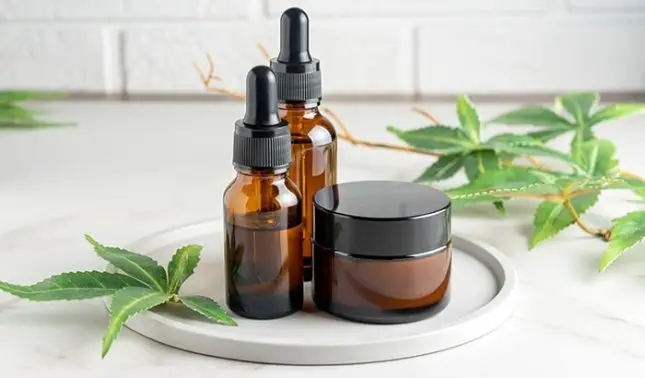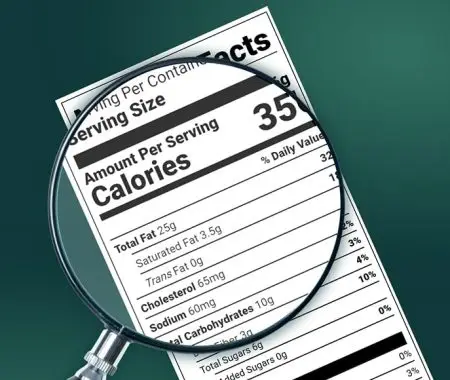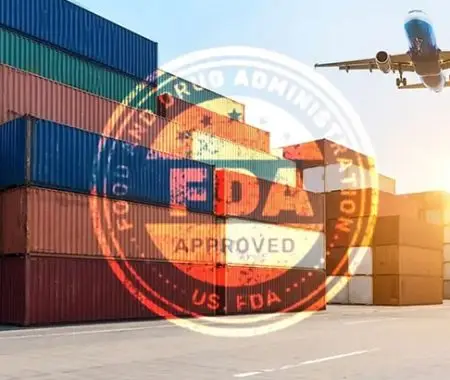This guide aims to help businesses understand key product packaging and labelling requirements for various types of cannabis products.
First, we outline the importance of these requirements and Health Canada’s regulations. Then we cover the mandatory product packaging requirements and the labelling requirements for different types of cannabis products, including edibles, flower, extracts, topics, and more.
We also touch on what is not allowed on the packaging or labels for cannabis products. Food Label Maker provides solutions that streamline the creation of regulatory-compliant food labels. This solution is ideal for producers of cannabis food products as it includes user-friendly built-in tools for creating nutrition labels, optimizing your recipes, managing your recipe costing, and more.
Importance of Maintaining Compliant Cannabis Packaging & Labelling in Canada
Cannabis packaging and labelling regulations in Canada are set by Health Canada under the Cannabis Act and Cannabis Regulations (CR). These regulations outline specific labelling standards for cannabis products to ensure consistency, and they are vital for product safety and legality.
Accurate labels help consumers make informed decisions about:
- THC & CBD content and dosage
- Potential health risks
- Allergens and ingredient sensitivities
- Product type and intended use
This ensures that consumers use these products safely and responsibly.
What if I Fail to Comply With Health Canada’s Cannabis Regulations?
Failure to comply with Health Canada’s cannabis regulations can lead to product recalls, financial penalties, and even license suspensions.
Regulations are consistently evolving, so compliance can be an ongoing challenge as policies must be monitored continuously.
Labelling requirements also vary by product type; for example, cannabis flower has different standards than edibles, extracts, and topicals. Additional regulations are in place for consumable products to prevent any allergic or adverse reactions.
Businesses must stay updated on Canada’s regulations to ensure that they are communicating accurate information on their product labels. For more details or updates, refer to Health Canada’s official packaging and labelling guide.
Exploring Specific Cannabis Labelling Requirements in Canada
In Canada, there are labelling requirements common across different types of cannabis products, however, there are also product-specific regulations.
For example, for all labels for cannabis products, you are required to cover things such as dosage requirements or THC/CBD content, while for cannabis edibles, but not other products, you also need to have a nutrition facts table.
Let’s explore these in more detail below.
Labelling Requirements Common Across Cannabis Products
Every cannabis product label must include:
- THC & CBD Content: Must be displayed separately from nutrient values, and in mg/g or percentage.
- Product Identity: Clearly identifies the cannabis product type and format (e.g., dried flower, edible).
- License Holder Information: Includes the producer’s name and contact details for accountability.
- Net Weight/Volume: Specifies the exact quantity of product in g or mL.
- Ingredient & Allergen Information: Mandatory for edibles, extracts, and topicals to ensure consumer safety.
- Bilingual Requirements: All label elements, including THC/CBD content, ingredients, usage instructions, and warnings, must be displayed in both English and French to meet national standards.
- The product’s intended use.
Labels must also follow Health Canada’s standardised format for legibility, which are:
- All required text (e.g., THC/CBD content, warnings, ingredient lists) must be in a minimum font size of 6 points (unless otherwise specified).
- Sans-serif fonts (e.g., Arial, Helvetica) are recommended to maintain clarity.
- Bold and uppercase letters may be required for specific items, such as health warnings.
- Text must not be printed over patterns, images, or colours that reduce legibility.
- Font sizes and positioning must essentially ensure that the information is easy to read and compliant.
The two most important visual elements to include are the following:
Health Warning Message
- Must follow Health Canada’s approved format and wording.
- The health warning message must appear in a yellow box with black text.
- Must be displayed in both English and French and cover risks such as addiction, delayed effects, and respiratory harm.
The official message is shown below:
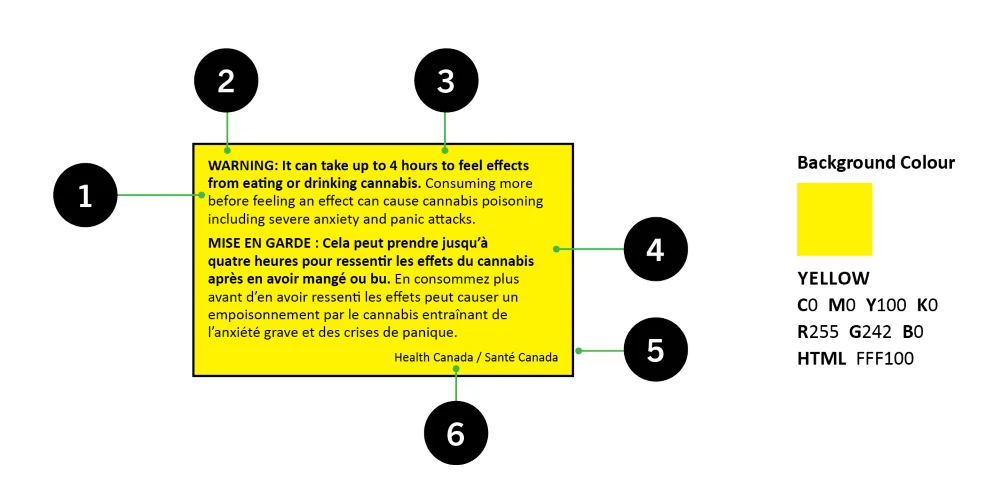
Standardised Cannabis Symbol
- Required on all products containing detectable THC (except those with 0.3mg/g or less of THC).
- The cannabis symbol must be a red stop sign with a white cannabis leaf and “THC” below it.
- It must have a white border of at least 2 points on all side and be at least 1.27 cm by 1.27 cm in size.
The official symbol is shown below:
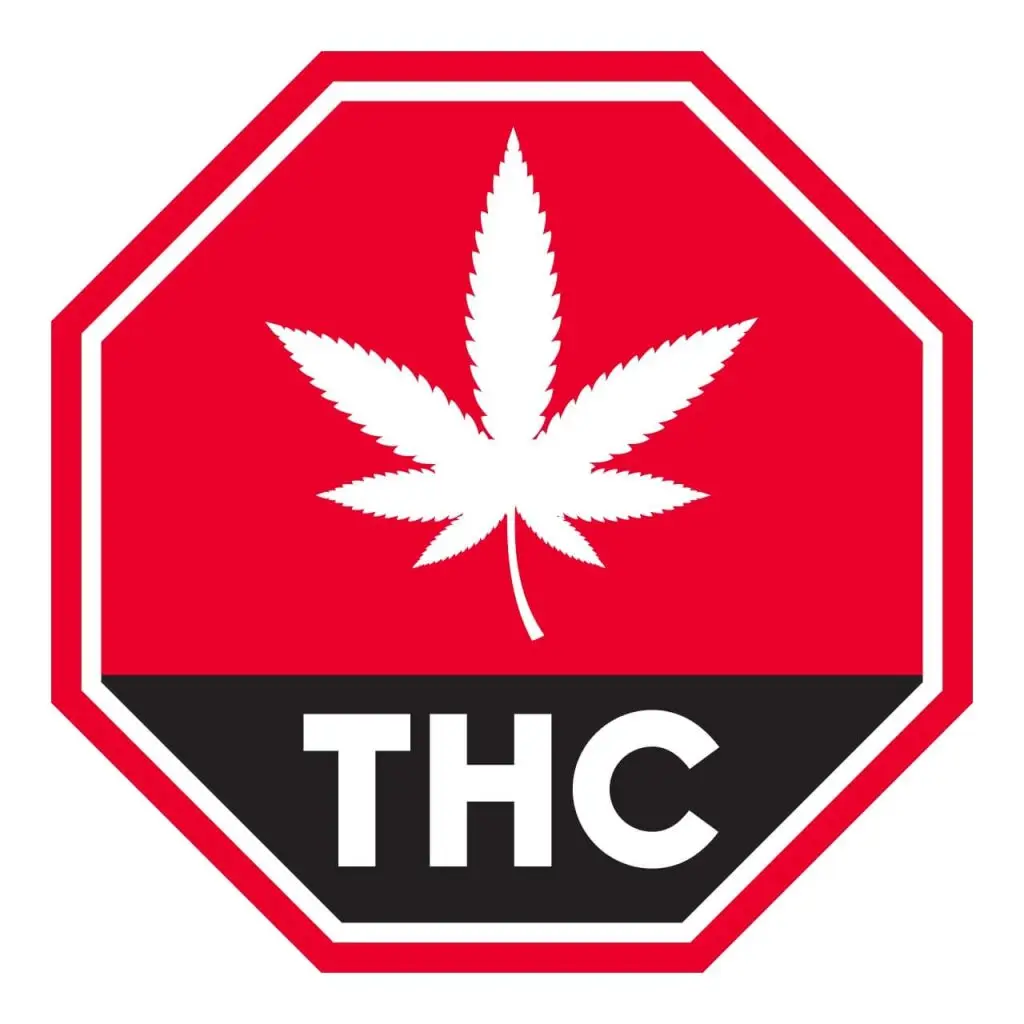
Specific labelling requirements for types of cannabis products
Cannabis products must meet a combination of labelling and packaging requirements, depending on their type.
The following outlines key compliance details for different cannabis formats, including edibles, vapes, oils, topicals, and dried flower:
Edibles
- Must include a Nutrition Facts Table (NFT) with serving size, calories, macronutrients, and allergens.
- THC per serving and per package must be clearly listed, with a maximum of 10mg THC per package, regardless of the number of servings.
- Ingredient lists and allergen declarations are mandatory to meet food safety standards.
- Health warnings must be prominent and include standardized statements about the delayed onset of effects and risks of overconsumption.
What Must Be Included in the Nutrition Facts Table?
A Nutrition Facts Table (NFT) is required for cannabis edibles and some ingestible extracts to give consumers clear dietary information for responsible consumption.
Food Label Maker can help you create clear and compliant NFTs, or they can provide you with expert advice from their team of nutritionists. Trial their software or reach out to them to simplify your labelling process and avoid costly compliance errors.
The NFT also plays a key role in helping consumers understand the intended use and nutritional impact of the product, especially for those with dietary restrictions or health concerns.
Every NFT on a cannabis product must include:
- Serving Size Information: Clearly defines the typical serving to prevent accidental overconsumption.
- Calories and Macronutrient Content: Lists energy value, fats, carbohydrates, and proteins per serving.
- Sugar, Sodium, and Other Nutrients: Required for consumer awareness, particularly for dietary restrictions.
- Daily Value Percentages (%DV): Provides context on how the product fits into a daily diet where applicable.
Below is an example of a complete and compliant NFT:
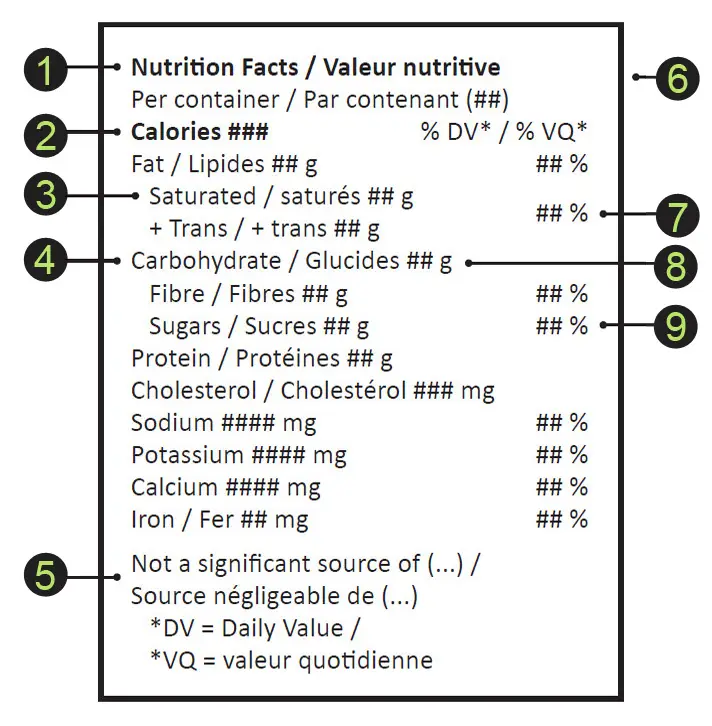
Vapes
- Labels must show the total THC and CBD in mg per unit (e.g., per cartridge or disposable vape).
- Must include inhalation and health warnings, covering at least 35% of the principal display panel (PDP), to highlight respiratory risks.
- Ingredient lists and product names must identify all active ingredients and additives.
- Vapes must carry toxicity warnings, especially about accidental ingestion or exposure.
Dried Cannabis or Cannabis Flower
- THC and CBD content must be shown in mg/g and as a percentage, both “as sold” and “total” values (post-decarboxylation).
- Net weight must be stated in grams, and the label must indicate if it’s dried or fresh cannabis.
- Health warnings should address risks associated with combustion and inhalation.
Cannabis Infused Oils & Extracts
- Labels must show THC and CBD concentration per millilitre for accurate dosing.
- The volume of oil (in mL) must be clearly indicated.
- Dosing instructions are required, including recommended usage and warnings against overconsumption.
- Oils must not contain sweeteners, flavourings, or ingredients that appeal to minors.
Topicals Containing Cannabis (balms, creams, sprays)
- Must display total THC and CBD content per container and clearly state the intended use (e.g., for external application).
- Must include warnings about skin absorption and the potential for irritation or allergic reactions.
- Labels must avoid non-medical claims or misleading therapeutic benefits.
- Application instructions should detail how and where to use the product, and in what amounts.
By following these requirements, producers can ensure each cannabis product is clearly and safely presented, allowing consumers to make informed decisions
See How FoodLabelMaker Can Help You
Mandatory Cannabis Product Packaging Requirements
All cannabis products must be sold in packaging that meets strict federal safety and security standards. These requirements are designed to display product information clearly, prevent misuse, tampering, accidental consumption, and most importantly, protects minors from exposure.
Mandatory requirements include:
Packaging Date and Lot Number
- Required to show product freshness and enable traceability in the event of a product recall.
Placement on Packaging
- The Nutrition Facts Table (NFT) and THC/CBD content must be shown on one principal display panel (PDP).
- These elements must not be obscured by branding or graphics.
Black & White Colour Scheme
- Packaging must use a black and white colour scheme to maintain uniformity and be visually unappealing to minors.
- This also allows text to be distinguishable against its background, so black text should be printed on a white background and vice versa.
- It also helps distinguish cannabis products from regular consumer goods.
NFT Separated from THC/CBD Labelling:
- Nutritional information (where applicable) must be clearly separated from cannabinoid content to avoid confusion.
- This is particularly important for edible products with both an NFT and THC/CBD values.
Net Weight/Volume
- Specifies the exact quantity of cannabis in grams or millilitres (g or mL).
- Though it appears on the label, it is also regulated as a packaging requirement under Health Canada.
Child-resistant and Tamper-free Packaging
- Packaging must be child-resistant, meaning it requires a specific amount of force or manipulation to open, and it must remain secure after repeated use.
- Tamper-evident seals are mandatory to show whether the product has been opened or altered before purchase.
- Containers must remain functional and safe throughout the product’s intended use.
Odour-proof and Opaque Packaging (not applicable to cannabis plants or seeds)
- Odour-proof containers prevent cannabis scents from escaping, preserving product freshness and promoting discretion.
- Opaque packaging is required to stop the product from being visible, reducing its appeal to minors and aligning with plain packaging laws.
- Seeds and live plants are exempt from opacity rules to allow consumers to evaluate viability.
Durable and Sustainable Packaging Materials
- Packaging must be strong enough to protect the cannabis product from damage, contamination, and degradation.
- Acceptable materials include plastic, glass, and metal, as long as they meet safety and compliance standards.
- Businesses are encouraged to use eco-friendly materials, but they must still comply with child-resistant and tamper-proof requirements.
Maximum Package Size and THC Limits
- Edibles are limited to 10mg of THC per package, regardless of the number of servings.
- Total package weight and volume restrictions exist to prevent excessive cannabis possession in a single unit.
- Other cannabis formats, like extracts or topicals, have defined THC concentration and volume limits under the Cannabis Regulations
- Multi-use products, such as oils, must include resealable packaging to maintain safety and freshness between uses.
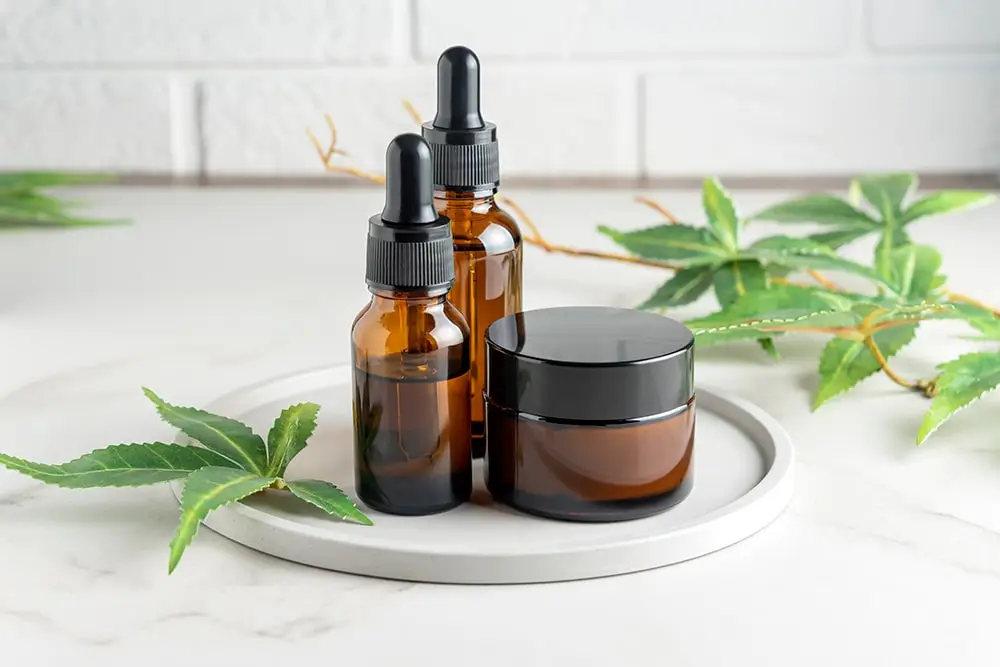
What Is Not Allowed on Cannabis Product Packaging
To protect consumers, Health Canada enforces strict rules around what cannot appear on cannabis product packaging. These limitations are part of the plain packaging requirements under the Cannabis Act, aimed at reducing visual appeal to prevent products from appealing to minors, and ensuring information is clearly communicated so consumers can make informed decisions.
Bright Branding, Logos, and Colours
- Cannabis packaging must use a uniform, plain background color with no glossy, metallic, fluorescent, or embossed finishes.
- Logos must be no larger than the standardized cannabis symbol (1.27 cm x 1.27 cm), printed in a single color, and placed in a way that does not interfere with mandatory product information.
- All health warning messages and product information must be in a contrasting colour for readability but still follow the plain packaging rules.
Inserts or Leaflets
- Promotional inserts such as coupons, giveaways, product samples, or any form of advertisement are not permitted, either inside or outside the packaging.
- Only legally required product information, such as dosage instructions or regulatory notices, may be included.
Incorrect or Omitted Standardized Cannabis Symbol
- All THC-containing products must display the standardized cannabis symbol.
- The symbol must meet specific size, colour, and placement requirements.
- Incorrect or missing symbols are a serious compliance violation and may result in law enforcement becoming involved.
Two or More Additional Brand Elements
- Under plain packaging laws, only one additional brand element is allowed, such as a slogan or visual design feature.
- Including multiple brand elements – such as taglines, unique fonts, or obstructing patterns – violates Health Canada’s regulations and may be considered promotional.
Misleading or Unverified Health and Safety Claims
- Medical or therapeutic claims are strictly prohibited unless they are approved by Health Canada through appropriate licensing.
- Unverified claims about potency, safety, or comparisons to alcohol or tobacco are not allowed.
- All labelling must be accurate, non-misleading, and scientifically supported, with no suggestions that a product is “safer” or more effective than another.
Final Thoughts on Labelling for Cannabis in Canada
Accurate and compliant cannabis labelling is essential for protecting public health, educating consumers, and upholding the credibility of the cannabis industry.
With strict and evolving packaging and labelling requirements set by Health Canada, producers must stay informed and ensure every cannabis product meets the latest standards for safety and transparency.
Clear information such as THC and CBD content, usage instructions, and mandatory health warning messages empowers consumers to make informed decisions.
Food Label Maker provides producers of food products, including cannabis food products, with nutrition label software that streamlines the creation of nutrition facts labels that are compliant with regulations in Canada, as well as the United States and other regions.
With our user-friendly software, anyone can generate accurate and compliant food labels. Our solutions also include a recipe builder and costing tool, serving size calculator, ingredient list generator, and more.
Read through our articles on CFIA FOP Labelling or CFIA’s New Serving Size Guidelines for Canada if you need more insight into food labelling requirements for this particular regulatory body.
FAQs:
Do cannabis labels need to include nutrition facts?
Nutrition Facts Tables (NFTs) are mandatory for edible cannabis and certain ingestible extracts, but not for dried cannabis, vapes, or topicals.
The NFT must include serving size information, number of calories and macronutrient content (carbohydrates, protein, and fat), sugar, sodium, other nutrients and daily value percentages (%DV).
THC and CBD content must also be displayed clearly on the product package and separately from the NFT to avoid any confusion.
Ingredient lists and allergen declarations are also mandatory for edibles to comply with food safety regulations and warn consumers of any adverse reactions or health risks.
What are the bilingual labelling requirements for cannabis in Canada?
All mandatory cannabis label information must be provided in both English and French, as per Health Canada’s regulations.
Bilingual requirements apply to critical elements such as THC/CBD content, health warning statements, product identity, and ingredient lists.
Non-compliance with bilingual labelling can lead to penalties, product recalls, or even legal action from regulatory bodies.
How can I ensure my cannabis labels comply with Health Canada regulations?
To stay compliant:
- Follow the Cannabis Regulations closely, including the correct use of the standardised cannabis symbol and mandatory health warning messages.
- Use approved formatting and font sizes, and ensure your labels meet readability and layout standards.
- Conduct regular label reviews and updates to stay aligned with regulatory changes and avoid compliance risks.
Consult one of Food Label Maker’s certified nutritionists if you would like professional advice or a review of your labels to ensure they are accurate and compliant.
What inkjet inks can be used for legal cannabis packaging?
Inks used on cannabis packaging must:
- Be non-toxic
- Be food-safe
- Be durable
- Not be prone to smudging if placed near water and maintain readability over the product’s shelf life
- Be low in volatile organic compounds (VOCs) to meet environmental and safety standards
- Be compatible with child-resistant and tamper-evident packaging, without affecting safety features
For suitable printing options for edible products, check out our guide to the best label printers for food packaging.

